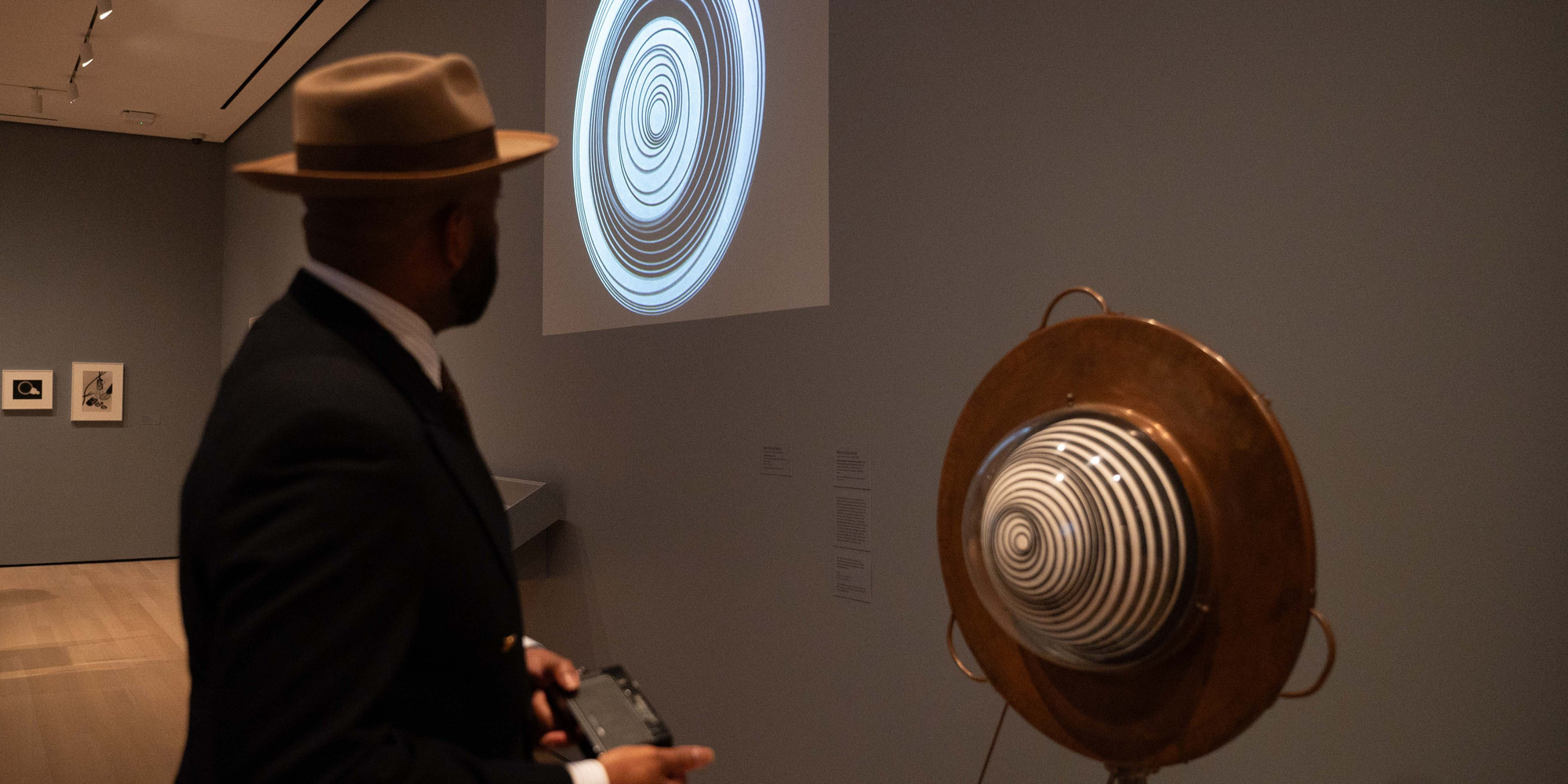
MoMA Mixtape: Cristo Redentor Spirals into Marcel Duchamp
Jazz in the Garden podcast host Naeem Douglas celebrates the uniquely modern art form of jazz.
Naeem Douglas
May 28, 2024
After spending more than a year producing MoMA Mixtape, I’ve found myself on the other end of the camera. I have given much thought to pairing art and music, but found this assignment harder than I expected. This jazz-centered installment of MoMA Mixtape is inspired by MoMA’s new podcast, Jazz in the Garden. While walking through the galleries, I saw familiar pieces that made me think of music, but I had to ditch quite a few because they didn’t pair well with jazz. For this mixtape, I focused on the first emotion I felt when looking at the artwork, and tried to find a similar emotion in a piece of music.
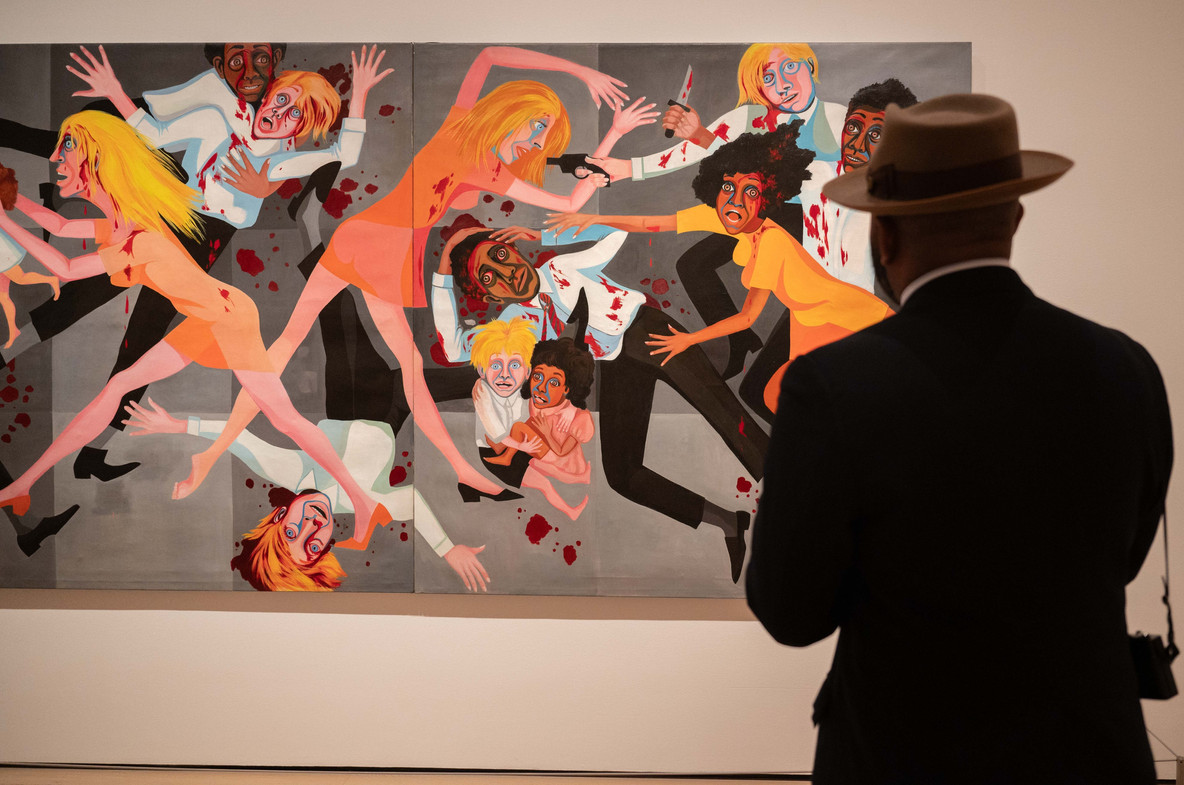
Naeem Douglas with Faith Ringgold’s American People Series #20: Die
Cliff Martinez’s “If Anyman Thirst” + Faith Ringgold’s American People Series #20: Die
Our first stop is jazz-adjacent. It’s the score to an episode from season 2 of the greatest show no one saw—The Knick. The track starts off menacingly, like you know what’s going on but can’t get away. It was used to score a scene of a man preaching to a church choir. He’s a man who lies, cheats, and steals to get his way, and the people he hurts don’t matter to him. He’s a walking contradiction. Faith Ringgold vividly channels the racism and contradictions of 1960s America in this huge painting. The land of peace and prosperity, is not peaceful and doesn’t share its prosperity with its Black constituents.
I imagine there’s a location on Venus that looks like [The Fountains]. If I were on the planet to see it, I’d want to be playing “Venus” by Stratøs.
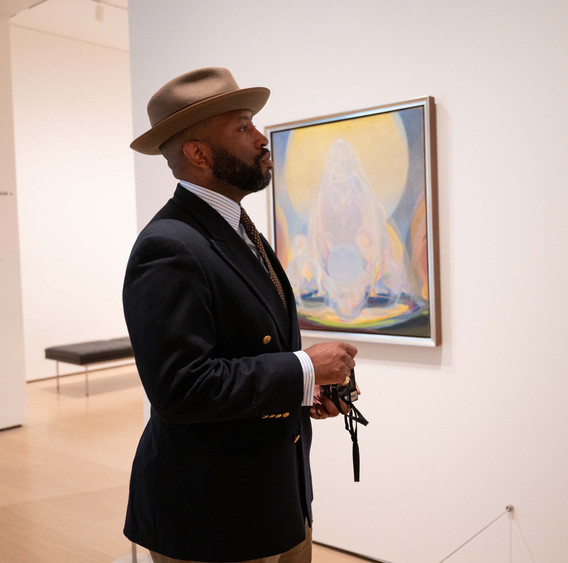
Naeem Douglas with Agnes Pelton’s The Fountains
Stratøs’s “Venus” + Agnes Pelton’s The Fountains
Saxophonist Stratøs and pianist Alex Mansour (who also plays cello on this track) complement each other so well. Their momentary pauses give the ethereal piece time to breathe. With its mix of yellow, green, and blue, Agnes Pelton’s The Fountains is just as ethereal. I imagine there’s a location on Venus that looks like it. If I were on the planet to see it, I’d want to be playing “Venus” by Stratøs.
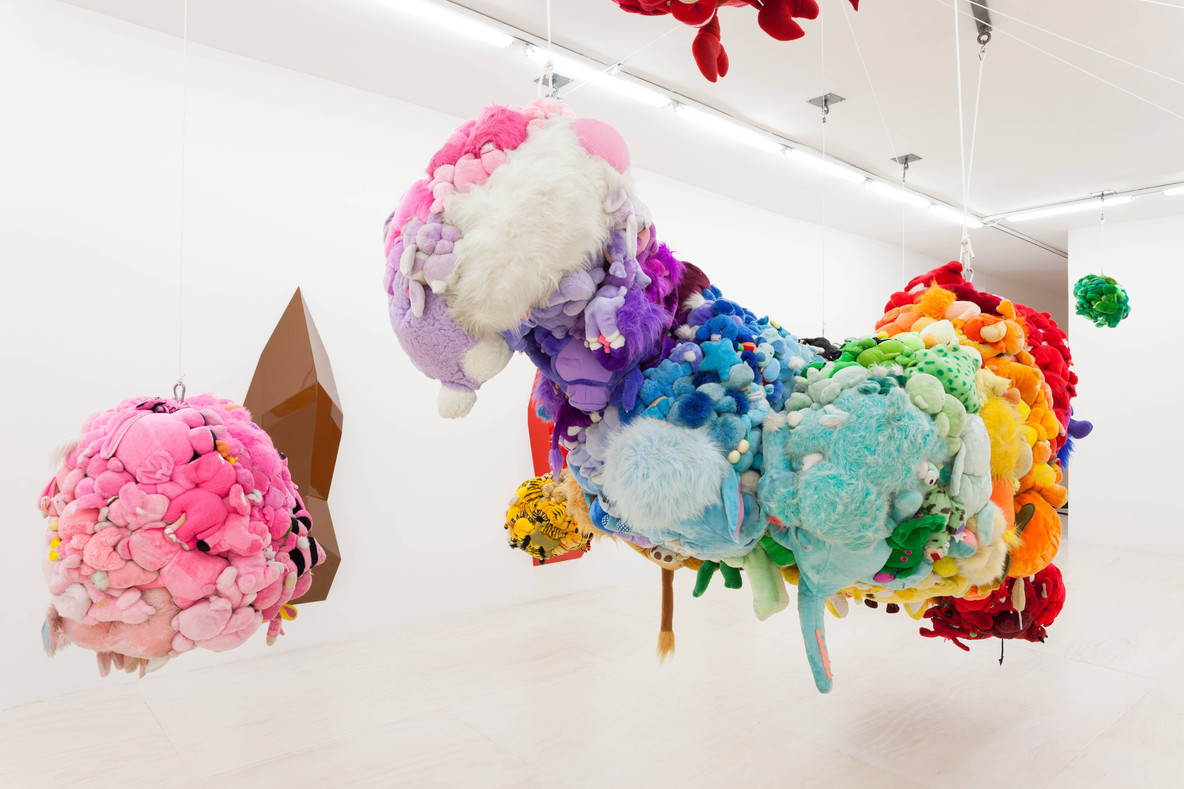
Mike Kelley. Deodorized Central Mass with Satellites. 1991/1999
Sufjan Stevens’s “Movement I: In The Countenance of Kings” + Mike Kelley’s Deodorized Central Mass with Satellites
This was the quickest and most vivid pairing on this list. At the 2:35 mark, the string section and vibraphone in “Movement” play a childlike melody. When it swells I feel like I’m being lifted on a cloud. Perhaps the cloud is made of stuffed animals, like the ones in Mike Kelley’s Deodorized Central Mass. “Movement I” is still playing and you look down. You’re floating on Mike Kelley’s clouds (or orbs, as he called them) of stuffed animals above the snarling traffic of the Brooklyn Queens Expressway, a notorious stretch of New York City highway, and the title of the album on which “Movement I” appears. It is a gentle five-minute ride. At the end, you’ve reached your destination, wherever it might be.
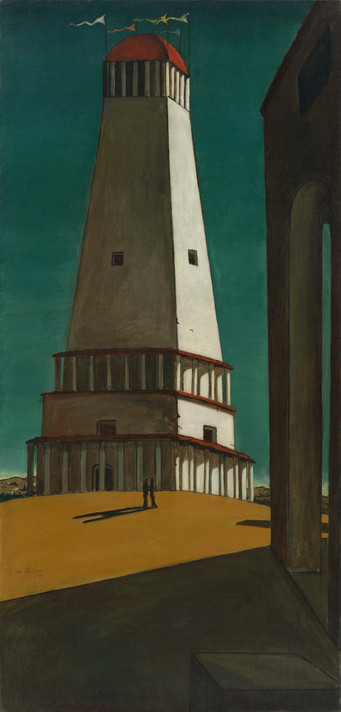
Giorgio de Chirico. The Nostalgia of the Infinite. Paris 1912–13? (dated on painting 1911)
David Linard’s “Lemons” + Giorgio de Chirico’s The Nostalgia of the Infinite
“You shine for me/ When I can’t see” is the first line in David Linard’s “Lemons.” It’s such a personal song about having someone to depend on. In The Nostalgia of the Infinite there’s a tall tower. It stands on a hill and looks like it serves as a beacon for the town in Giorgio de Chirico’s painting—in the same way that people can serve as our guiding lights. If you’re lost, look for it and it’ll guide you home.
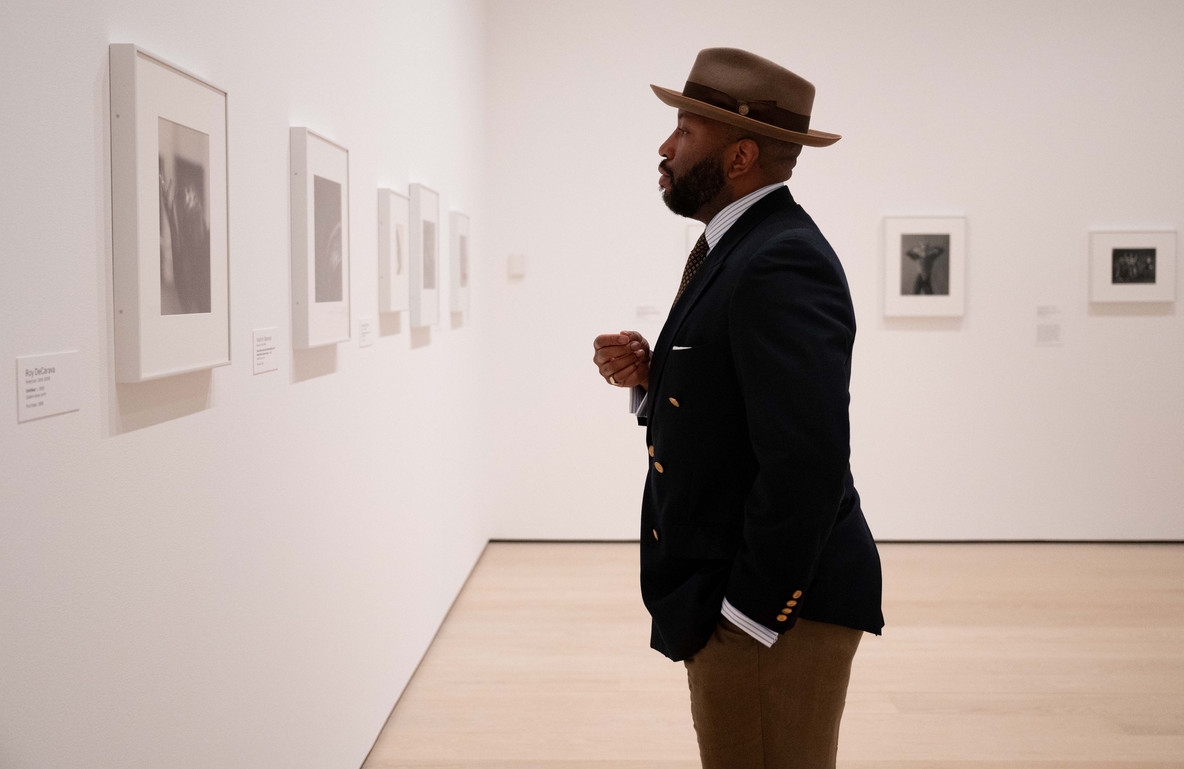
Naeem Douglas at MoMA
Milt Jackson’s “The Quota” + Roy DeCarava’s Untitled
A playlist celebrating the release of our Jazz in the Garden podcast has to include some live jazz recorded at MoMA. “Quota” is one of my favorites from Milt Jackson’s Live at The Museum of Modern Art album. He hops from one side of the vibraphone to the other. It sounds like it’s hard to keep up, and it’s beautiful in its flow. I imagine Roy DeCarava had the same “problem” when making this image. He tries to keep up, but the beauty of the image can’t stay in one place. It’s blurred and seemingly in two places at once. Ron Carter, who plays bass on this song, would return to the Museum nearly 30 years later to perform in conjunction with a Roy DeCarava exhibition. (DeCarava and Carter were good friends.)
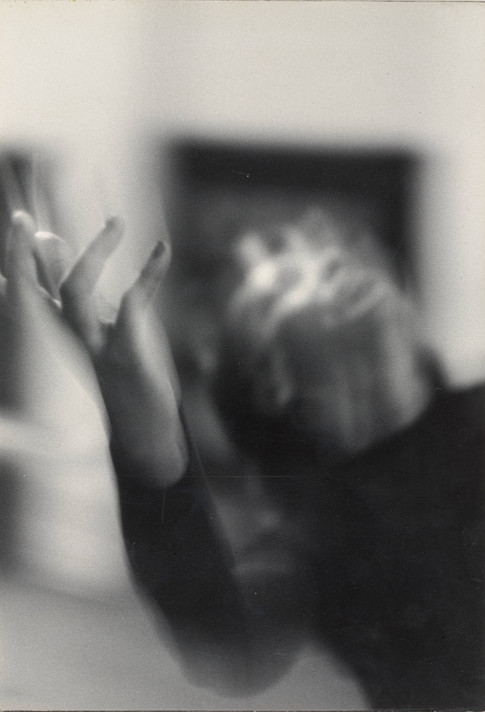
Roy DeCarava. Untitled. Before 1958
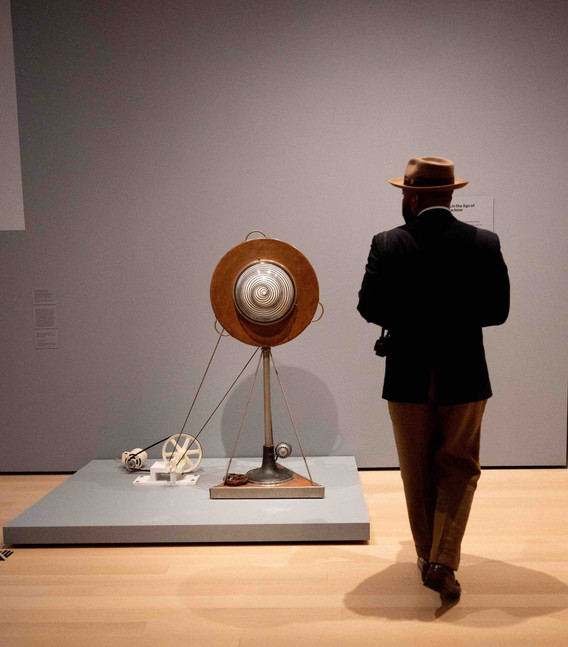
Naeem Douglas with Anemic Cinema
Donald Byrd’s “Cristo Redentor” + Marcel Duchamp’s Anemic Cinema
Cristo Redentor—Christ the Redeemer. Many of us may think about the statue in Rio de Janeiro. But that’s not where I’m taking this. The melody of the first two minutes is voices harmonizing with a vibraphone and piano. By the time Byrd plays his horn, it’s too late. You’re wrapped in a trance. It’s a somber, melodic ride of rising crescendos. All of these elements swirl together as though they’re on Marcel Duchamp’s wheel, singing, musing, enthralling.

